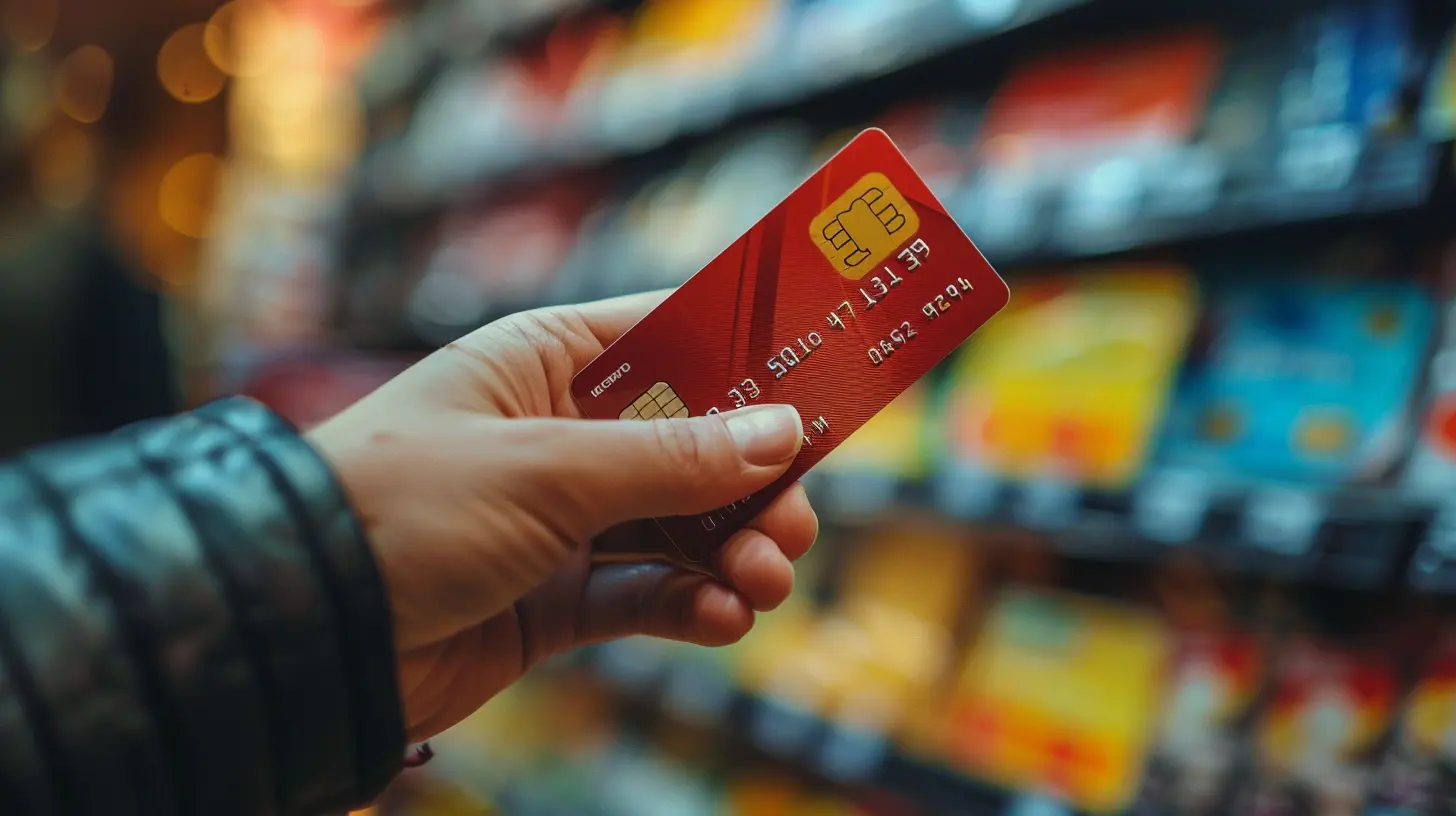The Evolution of E-Commerce Loyalty Programs
9 September 2025
Ah, loyalty programs—the magical carrot dangling in front of consumers, convincing them that spending just a little more will unlock untold riches (or, you know, a 5% discount on their next purchase). Once upon a time, loyalty programs were as simple as collecting stamps on a piece of paper. But as e-commerce has evolved, so too have these programs, transforming into highly sophisticated, data-driven marketing machines.
So, how did we get here? And are these programs really designed to reward us, or are they just another clever way for businesses to keep us hooked? Let’s dive into the evolution of e-commerce loyalty programs and see how they’ve gone from basic punch cards to full-blown digital ecosystems.

The Good Old Days of Loyalty Programs
Remember the old-school punch card? You’d buy ten coffees, and—if your luck didn’t run out before you finished the card—you’d get one free. No apps, no tracking, just a physical card that you’d inevitably lose in the abyss of your wallet.These early loyalty programs were simple, no-nonsense, and actually kind of charming. Businesses rewarded regular customers, and customers felt like they were getting a deal. No algorithms, no data collection, just good old-fashioned bribery to keep you coming back.
But, as delightful as these programs were, businesses started realizing something: physical punch cards couldn’t track consumer behavior. And if there’s one thing businesses love, it’s tracking every move we make. Enter the digital age of loyalty programs.

The Digital Revolution: Points, Apps, and Data Mining
With the rise of e-commerce, loyalty programs went digital faster than you can say “data breach.” Suddenly, businesses weren’t just handing out rewards—they were monitoring us.Instead of punch cards, we got points-based systems. Every purchase earned you points, which could be redeemed for discounts, freebies, or—if the company was feeling particularly stingy—a free shipping coupon (because nothing says “thank you for your loyalty” like waiving the privilege of paying for delivery).
Brands also started launching dedicated mobile apps, ensuring that customers remained plugged into their ecosystem 24/7. These apps didn’t just track purchases—they tracked browsing habits, preferences, and even location. Because nothing says customer appreciation like a company knowing that you visited a competitor’s store last Tuesday.

The Gamification Era: Because Why Shouldn’t Shopping Feel Like a Video Game?
Then came gamification—because, apparently, buying toothpaste needed to be as exhilarating as leveling up in a video game.Retailers started introducing tiered loyalty programs, where the more you spent, the more “exclusive” your rewards became. Bronze, silver, gold… eventually leading to some kind of ultra-elite-platinum-diamond-unicorn status that promised premium perks (but usually just came with extra emails you didn’t ask for).
Gamification also introduced challenges, streaks, and limited-time offers that encouraged customers to keep coming back. “Buy three coffees this week and get 50 bonus points!” Because nothing fuels your caffeine addiction quite like the fear of missing out on a deal.

Subscription-Based Loyalty: Because Free Rewards Weren’t Profitable Enough
At some point, businesses looked at their loyalty programs and thought, “You know what would make this even better? Charging customers for it.” Yes, folks, welcome to the era of paid loyalty programs.Amazon Prime, Walmart+, and Sephora’s Beauty Insider program all work on the same principle: customers pay to be part of a “loyalty” program that gives them exclusive benefits. Free shipping, early access to sales, exclusive deals—it’s all yours if you’re willing to subscribe.
And let’s be real, once you’ve handed over your hard-earned money for a loyalty membership, you’re basically forced to remain loyal. After all, you’ve got to “make the most” of your investment, right? It’s like a gym membership, except instead of getting fit, you just end up drowning in online shopping receipts.
AI and Personalization: Because Companies Know You Better Than You Know Yourself
Today, loyalty programs are basically powered by artificial intelligence, ensuring that every reward, discount, and recommendation is meticulously tailored to you.Ever wonder why you suddenly get an email about discounts on running shoes right after you Google “best running shoes for beginners”? That’s AI at work—predicting (and occasionally creepily dictating) your next purchase.
And let’s not forget personalization. Businesses now track everything—from your favorite brands to your average order value—to ensure that their loyalty programs “feel” hyper-personalized. If this sounds like a convenient way to enhance customer experience, congratulations, you’ve fallen for the marketing pitch. The reality? They’re just using data to make sure you spend more money.
The Future of E-Commerce Loyalty Programs: What’s Next?
So, what does the future hold for loyalty programs? Buckle up, because things are about to get even weirder.Cryptocurrency and Blockchain-Based Rewards
Some companies are experimenting with crypto-based loyalty programs, allowing customers to earn and redeem tokens that can be used across multiple brands. Because, apparently, what loyalty programs really needed was even more complexity.NFTs in Loyalty Programs
Yes, you read that right. Some brands are exploring NFTs as part of their loyalty ecosystems. Imagine earning a limited-edition digital sneaker for being a loyal customer. Just what we all needed—another reason for people to argue about whether an image of a shoe is worth real money.Biometric Loyalty Programs
In the near future, don’t be surprised if loyalty programs stop requiring a username and password and start scanning your face or fingerprint instead. Because obviously, what the world really needs is corporations collecting even more of our personal data.Hyper-Personalization with AI Assistants
Soon, AI shopping assistants could enroll you in loyalty programs automatically, redeem rewards before you even realize you had them, and—let’s be honest—probably start making purchasing decisions for you. Who needs free will when your AI knows what you really want before you do?Are Loyalty Programs Actually Worth It?
At the end of the day, loyalty programs are just another way for businesses to keep us engaged, spending, and thinking we’re getting a deal. While some programs do offer genuinely good perks, many are just cleverly disguised marketing strategies designed to hook us into a never-ending spending cycle.So, should you participate in loyalty programs? Sure. Just don’t fool yourself into thinking you’re winning. Because, as with every game, the house (or in this case, the retailer) always wins.
all images in this post were generated using AI tools
Category:
E CommerceAuthor:

Jerry Graham
Discussion
rate this article
1 comments
Greta Love
This article provides an insightful look into the transformation of e-commerce loyalty programs. The evolution from simple point systems to personalized rewards highlights the importance of customer engagement in today's market. Emphasizing data-driven strategies and innovative technologies is crucial for businesses aiming to foster lasting loyalty. Great read!
September 14, 2025 at 4:16 AM

Jerry Graham
Thank you for your thoughtful feedback! I'm glad you found the article insightful and relevant to the ongoing changes in e-commerce loyalty programs.


